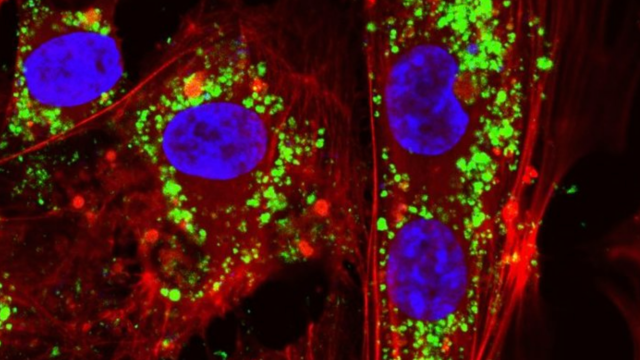An upcoming experiment aboard the International Space Station will test the effects of microgravity on living cells mixed with tiny ceramic particles. The test could result in powerful new antioxidants to treat the deleterious effects of prolonged exposure to space as well as various age-related diseases.
The raw materials for the research, called the Nano Antioxidants experiment, arrived at the ISS earlier today aboard a SpaceX Dragon cargo capsule, according to an European Space Agency press release.
The purpose of the project is to find new ways of stimulating cells such that they can fight back against the negative influence of microgravity on the muscles and bones of astronauts during long-duration missions. As an added bonus, the same technology could be used back on Earth to treat the elderly and people with muscle-wasting diseases.
Ceramic lab-designed nanoscale particles, dubbed nanoceria, will be added to a living cell culture and kept at a balmy 30 degrees Celsius for six days. The nanoceria are designed to mimic the way enzymes work in living organisms, and — fingers crossed — protect organisms against damage caused by oxidative stress. The lead scientist behind the project, Gianni Ciofani from the Italian Institute of Technology, is using the microgravity environment on the ISS to study how weightlessness influences the development of this culture.
“These nanomaterials chemically designed in our lab are very promising for their antioxidant activity,” said Ciofani in an ESA statement. “The particles can protect organisms from the damage caused by oxidative stress,” to which he added: “Nanotechnology has been explored in medicine on Earth, but its application in space is still in its infancy.”
In terms of specifics, Ciofani’s team is studying the role played by gravity in the production of reactive oxygen species (ROS), both at the molecular and cellular level, according to NASA. An abundance of ROS, also known as free radicals, in cells can damage DNA and proteins, leading to age-related disorders and sometimes death. Antioxidants inhibit oxidation, thus staving off the effects wrought by a buildup of free radicals.
For the experiment, half of the nanoceria-infused cell culture will be exposed to microgravity conditions, while the other half will be exposed to simulated gravity via a centrifuge. Once the six-day experiment is complete, the samples will be stored at -80 degrees Celsius and then returned to Earth. The samples will be compared to those from a duplicate experiment on Earth, which is serving as the control. Together, the experiments will hopefully reveal the unique effects of microgravity on the growth of the cell culture.
Ideally, this line of research could one day result in therapies involving pills or injections, and with the effects lasting potentially for several weeks at a time, according to the ESA. The nanoceria have the potential to prevent muscle-wasting in astronauts, and also to work as an anti-ageing therapy for elderly people or those with Parkinson’s disease and other forms of muscular atrophy.
The ESA even predicts cosmetic applications of this research, such as “skin treatments for glowing, youthful complexions,” according to the space agency’s press release.
It may be a while before we see the fruits of this research applied to actual clinical settings, but the new experiment is an intriguing step in that direction.
